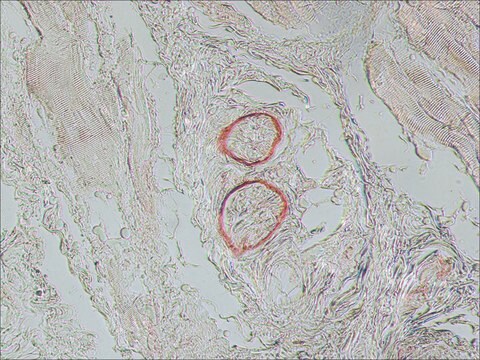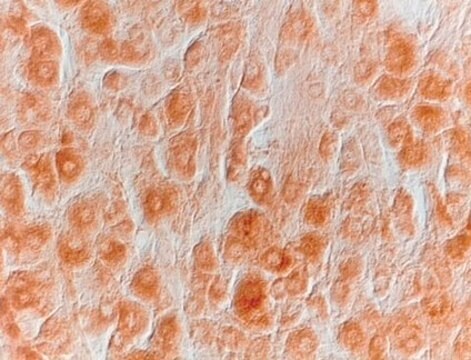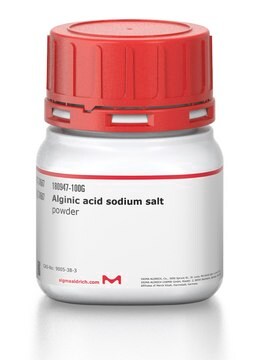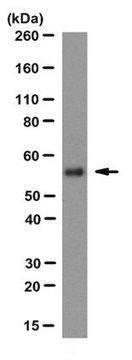MABN2322
Anti-Nerve Growth Factor Antibody, clone α D11
Sinônimo(s):
NGF;beta-NGF
About This Item
Produtos recomendados
fonte biológica
rat
Nível de qualidade
conjugado
unconjugated
forma do anticorpo
purified antibody
tipo de produto de anticorpo
primary antibodies
clone
α D11, monoclonal
peso molecular
calculated mol wt 27.088 kDa
purificado por
using protein G
reatividade de espécies
chicken, human, mouse
embalagem
antibody small pack of 100 μg
técnica(s)
ELISA: suitable
Isotipo
IgG2a
sequência de epítopo
N-terminal half
nº de adesão de ID de proteína
nº de adesão UniProt
Condições de expedição
dry ice
modificação pós-traducional do alvo
unmodified
Informações sobre genes
mouse ... Ngf(18049)
Descrição geral
Especificidade
Imunogênio
Aplicação
Evaluated by ELISA with recombinant mouse Nerve growth factor.
ELISA Analysis (ELISA): A representative lot of this antibody detected various dilution of recombinant mouse Nerve growth factor.
Tested applications
Surface plasmon resonance: A representative lot detected Nerve Growth Factor in Surface plasmon resonance applications (Covaceuszach, S., et al. (2012). PLoS One. 7(3):e32212).
ELISA Analysis: A representative lot detected Nerve Growth Factor in ELISA applications (Cattaneo, A., et al. (1988). J. Neurochem. 50(4):1003-10; Covaceuszach, S., et al. (2012). PLoS One. 7(3):e32212).
Inhibition Assay: A representative lot competitively inhibited the biological activity of mNGF and prevented the binding of NGF to PC12 cells. (Cattaneo, A., et al. (1988). J. Neurochem. 50(4):1003-10).
Radioimmunoassay: A representative lot detected Nerve growth factor in Radioimmunoassay applications (Cattaneo, A., et al. (1988). J. Neurochem. 50(4):1003-10).
Note: Actual optimal working dilutions must be determined by end user as specimens, and experimental conditions may vary with the end user
forma física
Armazenamento e estabilidade
Outras notas
Exoneração de responsabilidade
Não está encontrando o produto certo?
Experimente o nosso Ferramenta de seleção de produtos.
Código de classe de armazenamento
12 - Non Combustible Liquids
Classe de risco de água (WGK)
WGK 2
Ponto de fulgor (°F)
Not applicable
Ponto de fulgor (°C)
Not applicable
Certificados de análise (COA)
Busque Certificados de análise (COA) digitando o Número do Lote do produto. Os números de lote e remessa podem ser encontrados no rótulo de um produto após a palavra “Lot” ou “Batch”.
Já possui este produto?
Encontre a documentação dos produtos que você adquiriu recentemente na biblioteca de documentos.
Nossa equipe de cientistas tem experiência em todas as áreas de pesquisa, incluindo Life Sciences, ciência de materiais, síntese química, cromatografia, química analítica e muitas outras.
Entre em contato com a assistência técnica








